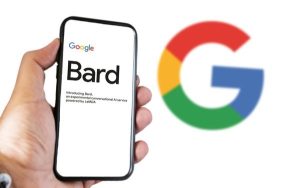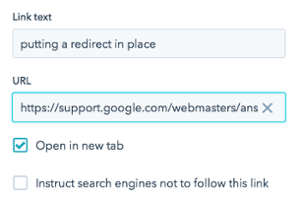It’s not a secret that content is the king when it comes to Search Engine Optimization (SEO). Every blogger knows that well when creating high-quality content, to seduce both search engines and visitors. However, content alone is not enough. Internal linking is here to support your SEO by driving traffic to other pages.
Internal linking is essential to any website because it helps establish site architecture and spread the link juice. Simply speaking, internal linking refers to any links from one page of a domain, which is linked to another page within the same domain. It can be linking to categories or main site navigation, within articles to related content or the footer, etc. For the needs of our article, we are going to focus mainly on editorial links, as they are the ones improving your content marketing strategy and, of course, your SEO.
Internal link building has several advantages as it helps build page authority, usability, connections between web pages, user experience, and potentially your rankings. This article aims to provide useful tips on why you should focus on your internal linking.
Advantages of a good internal linking
Internal linking is valuable in many ways for your global SEO strategy. Let’s focus on six different benefits of developing your internal linking.

1. Internal linking improves usability through anchor texts
Internal linking is here to help navigate throughout your website. By using proper and user-friendly in your articles, you will ease your user’s navigation. Your anchor texts must point to relevant and related content that is likely to interest your readers. For example, if you are talking about multiple content issues, you can redirect your user to a previous article listing tools, thus preventing the duplication of issues through internal linking.
2. Internal link helps spread the link juice
While focusing on external linking and backlinks, it’s important to build your authority from other websites. Internal linking helps you spread your link juice to other pages of your site. When you build backlinks to a particular page on your site, this target has links to other pages on your website, therefore spreading the link juice. Consequently, you want this juice to go to your money pages, as having a great understanding of how this flows through your inlinks is the main component of SEO.
3. Internal linking boosts page views
As said before, qualitative anchor texts can help visitors navigate your website. If the content you provide through internal linking is relevant to your audience, they are more likely to read further articles. This helps to increase your site conversion rate. Relevant linking will help new visitors discover your website, as followed links often increase your page views. Though to be truly efficient, be sure to have optimized your page speed to avoid huge bounce rate.
4. Internal linking improves PageRank
Before explaining why internal linking helps increase PageRank, let’s define what the PageRank is. Google has developed a metric to measure the importance of web pages, based on how many backlinks a webpage receives. The score goes from 0 to 10 and even if the topic is well discussed in the SEO community, Google continues using the PageRank as a ranking factor.
A page with high PageRank can further benefit their PageRank through internal linking by spreading link juice to other pages that are connected. Those pages will get a little boost regarding authority and then a boost in rankings thanks to the higher link juice received.
5. Internal linking improves time-onsite
Linking to related posts can help you increase time on site and lower bounce rate. Bounce rate refers to a visitor who is just viewing one page and immediately leaves your website after that. To reduce bounce rate, you can retain visitors on a site longer if the content you are internally linking to offers a real value. To monitor your bounce rate, you need to connect to your Google Analytics. Click on ‘Behavior’, ‘Site Content’, ‘All pages’, and you will see the bounce rate for each of your articles.

The bounce rate is an important number to track, as it has an enormous impact on your rankings. Indeed, a part of the usage parameters used in the Panda Updates are linked to the bounce rate, so improving your UX by providing interesting content on your website can give you a step ahead if you want to be Panda proof.
6. Internal linking helps to crawl and indexing
Google bots are designed to recreate user’s thinking. They’re going to visit your website and follow all the links and pages that are easily indexed. Building a strong and smart internal architecture will help bots to find deeper pages that are not always visited. These links can give a boost to other pages and help you rank higher overall. See the graph below, which clearly shows how to structure a perfect internal architecture.

Now we know the benefits of having qualitative internal links, so let’s focus on how to optimize them. Internal linking cannot be done without guidelines.
How to optimize your internal linking?
1. Segment and focus
You need to have a good understanding of your strengths and weaknesses regarding internal authority. All pages are not born equal, some of your pages are more valuable than others. If you are an e-commerce vendor, chances are your brand pages or your top sales pages are your primary targets, because these are the pages you benefit from most.
I would suggest analyzing these particular pages apart from others by setting up specific strategies for each group. You could link your brands directly from your navigation menu, thus multiplying the number of links to these pages. Or you could try to set up lists of suggested products based on your top sales, using a category system to better inlink your top pages.
2. Build semantic sillos
When you are writing new content, you can probably refer to other pages that are topically related to the content you are writing. Utilizing tags that are relevant to the topic can help the reader find other pages with similar themes, which make a semantic “inlinks sillos” or spreading the link juice, a lot of sense.

3. Write your inlinks in the Wikipedia way
Search engines are trying to make sense from any of your provided content. Anchor text and the content next to your inlinks have an enormous impact. When it’s possible, in product descriptions or blog posts, try to use keywords that are making sense in your anchors. Think about it as you would write a Wikipedia article. For instance, the screenshot below showing Search Engine Optimization, anchor text related to SEO make sense, enriching the lexical field of SEO with different keywords.

4. Don’t forget the deepest pages
Your website is continually growing. Therefore, some of your pages may become weakly connected to your most important pages. If you want to reactivate these hidden pages, you can link them in from time to time. This will help Google and other major search engines find these pages and re-rank them.
5. Don’t be afraid to set up nofollow and no-index
Understanding how your website’s architecture is built is the one thing, but having a comprehensive view of how bots are crawling your website is pretty useful too. You can use many different tools to analyze your server logs and discover significant insights, such as finding your most active SEO pages. An active page means a page frequently crawled by Google, which generates a healthy volume of organic traffic. Most probably, there are also pages on your website that aren’t generating organic traffic at all but are crawled a lot by bots. Don’t keep these low traffic pages as they are wasting Google resources. Instead, you could choose to set up a no-index on these pages in your Robots.txt. Help Google re-allocate its resources to the most valuable part of your website. In this way, your website will rank higher in SERPs, making a serious impact on figuring out the popularity of your indexable pages.
Internal linking can significantly improve your overall SEO performance, from usability, to link juice improvements. Building a strong internal architecture is a winning strategy. Now you have the primary keys; it’s your turn to optimize your own!
Digital & Social Articles on Business 2 Community(64)








